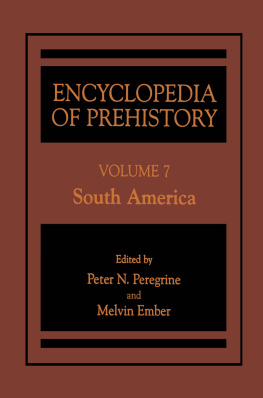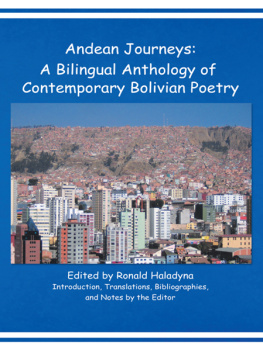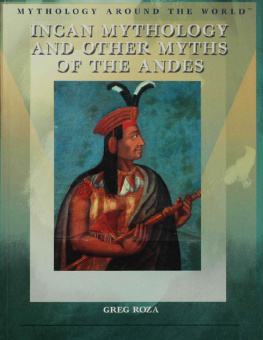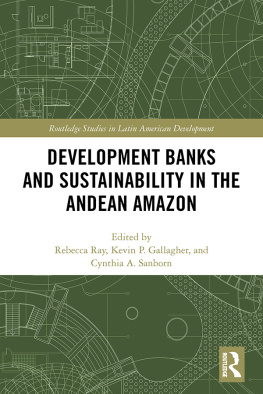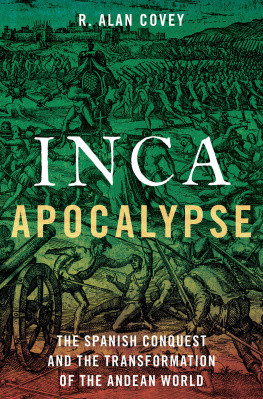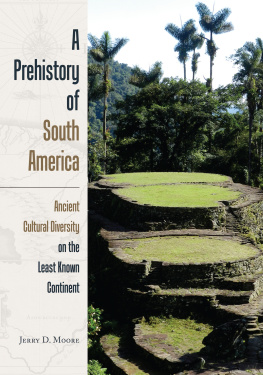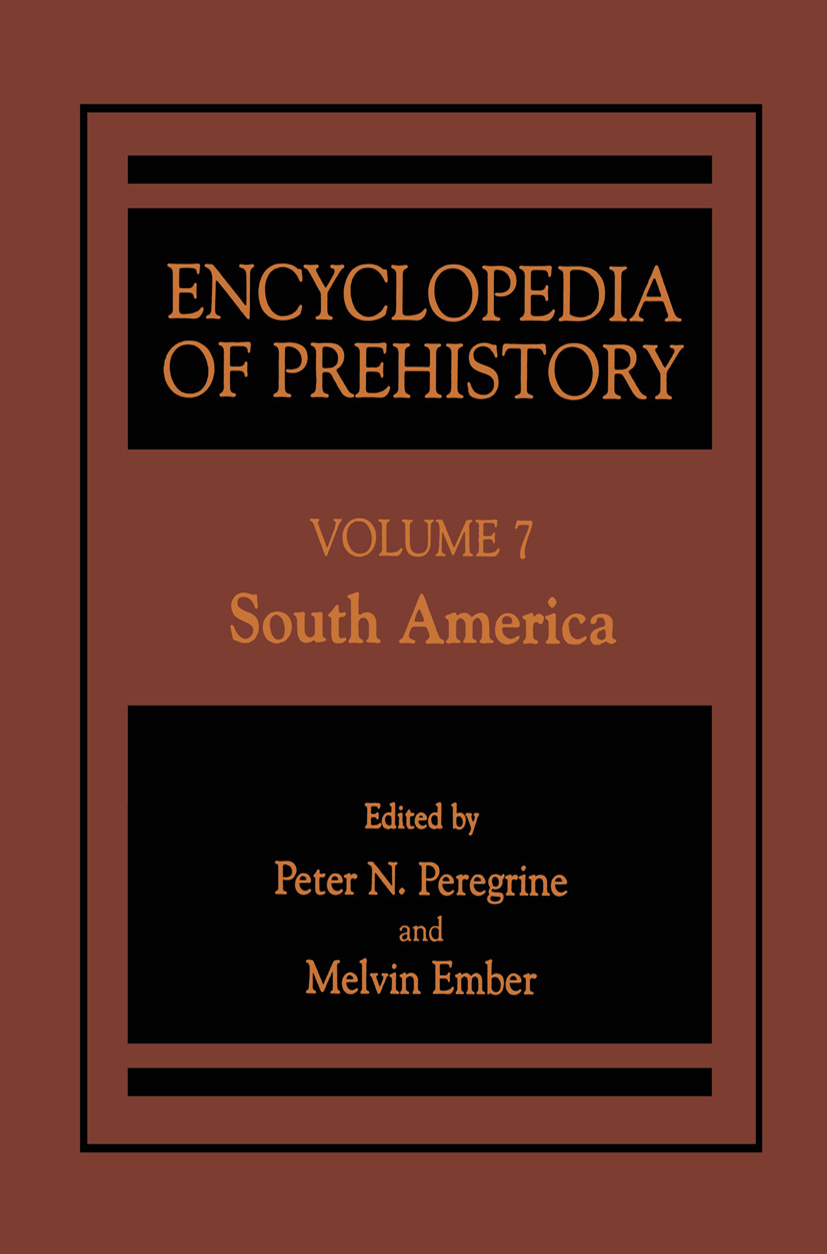The Encyclopedia of Prehistory represents an attempt to provide basic information on all archaeologically known cultures, covering the entire globe and the entire prehistory of humankind. It is designed as a tool to assist in doing comparative research on the peoples of the past. Most of the entries are written by the worlds foremost experts on the particular areas and time periods.
The Encyclopedia is organized according to major traditions. A major tradition is defined as a group of populations sharing similar subsistence practices, technology, and forms of sociopolitical organization, which are spatially contiguous over a relatively large area and which endure temporally for a relatively long period. Minimal areal coverage for a major tradition can be thought of as something like 100,000 square kilometers, while minimal temporal duration can be thought of as something like five centuries. Major traditions are not quite like cultures in an ethnological sense because, in addition to socioculturally defining characteristics, major traditions generally have a more extended temporal dimension. Major traditions are also defined by a somewhat different set of sociocultural characteristics than are ethnological cultures. Major traditions are defined based on common subsistence practices, sociopolitical organization, and material industries, but language, ideology, and kinship ties play little or no part in their definition because they are virtually unrecoverable from archaeological contexts. In contrast, language, ideology, and kinship ties are central to defining ethnological cultures.
There are three types of entries in the Encyclopedia: the major tradition entry, the regional subtradition entry, and the site entry. Each contains different types of information, and each is intended to be used in a different way. The major tradition entry is a general summary of information about a single major tradition; it provides descriptive information about the environment and culture of the people whose lifeways comprised the tradition. The major tradition entry lacks formal references but provides a list of suggested readings. Although the geographical and temporal range of the major tradition entry was stipulated for the authors, they were given the freedom to define regional subtraditions and sites on the basis of their own interpretations of the archaeological record. Regional subtradition and site entries, then, focus on archaeological areas and locales that are conventionally distinguished in the archaeological record for a given major tradition. The regional subtradition and site entries provide specific information on the unique archaeological record of a particular region or a particular archaeological site and are fully referenced.
How to Use the Encyclopedia of Prehistory
How you use the Encyclopedia will differ depending on the type of research you are doing. For most projects, you will want to begin with the maps at the front of the volume. Each map shows the geographical range of the major traditions in the volume at a given point in time. You may consult these maps and find the name(s) of major traditions in an area or time period of interest. The major tradition entries are organized alphabetically, with associated regional subtradition and site entries following immediately after the major tradition entry. It is important to note that although all major traditions have entries in the Encyclopedia, not all major traditions have regional subtradition or site entries associated with them. As noted above, in compiling the Encyclopedia, we allowed the authors to decide whether there is enough information in the archaeological record to warrant distinguishing regional subtraditions. Similarly, we allowed authors to determine which (if any) archaeological sites are important enough to warrant individual entries.
If you have a particular topic of interest, you will want to scan the major tradition entries and use the topical headings to determine which of the major traditions have information on that particular topic. Not all major tradition entries have information on all topics, but the following is a complete listing of the topics for which information may be presented:
Absolute Time Period
Relative Time Period
Location
Diagnostic Material Attributes
Regional Subtraditions
Important Sites
Environment
Climate
Topography
Geology
Biota
Settlements
Settlement system
Community organization
Housing
Population, health, and disease
Economy
Subsistence
Wild foods
Domestic foods
Industrial arts
Utensils
Ornaments
Trade
Division of labor
Differential access or control of
resources
Sociopolitical Organization
Political organization
Social control
Conflict
Religion and Expressive Culture
Religious beliefs
Religious practitioners
Ceremonies
Arts
Death and afterlife
Suggested Readings
Preparing the Encyclopedia of Prehistory
To develop the Encyclopedia, we first had to develop a comprehensive list of major traditions. To do this, we divided the world into eight regions: Africa, the Arctic and Subarctic, East Asia and Oceania, Europe, Middle America, North America, South America, and Southwest Asia. We then consulted basic, summary literature on the prehistory of each region and drew up a preliminary catalogue of the major traditions of the world. We sent this preliminary catalogue to our advisory board for comment and critique and revised the catalogue according to their suggestions. The revised catalogue was then sent to the advisory board for a final review and critique.
Once the complete list of major traditions was assembled, we invited recognized experts on the region and time period of each major tradition to contribute entries. Solicitations continued until we found authors for virtually all the major traditions. In extending these invitations, we tried whenever possible to first invite archaeologists from the region of the major tradition. We are pleased that schol-ars from more than 20 nations agreed to contribute to the Encyclopedia. We invited authors to comment on the definition of their major tradition and made numerous substantive changes based on their input. We also invited authors to contribute additional entries on important regional subtraditions and sites for their major traditions; many, although not all, did so. We reviewed all completed entries, and, if there were substantive questions or concerns about a particular entry, we asked appropriate members of the advisory board for adjudication.
We have used a fairly light hand in editing the entries that comprise the Encyclopedia. Our reasons were twofold: first, we wanted to maintain the authors individual styles, despite the outline we required them to follow; second, interpreting the archaeological record is often not as empirical and scientific as many of us would like to believe. Experience with and knowledge of local variation in the archaeological record are often critical to interpretation. Thus we thought it important to allow the experts working in a particular area to advance interpretations of the archaeological record with which they are comfortable. We never forced authors to provide information on a topic for which they thought there were no data; nor did we remove statements that seemed to stretch the available data. In short, we have let the experts speak in their own voices.

